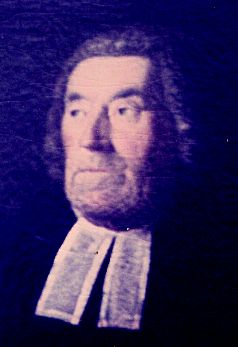| Send A Message |
The daughters of the first Thomas Boultbee of Stordon Grange have been noticed in the previous chapter. We now have to exhibit the history of his two sons Thomas and Joseph.
| [For Joseph see Chapter V. Thomas was baptised at Breedon-on-the-Hill Church on December 30, 1689. This indicates that his father was not yet living at Stordon Grange, but somewhere in or near the village of Griffydam since Breedon was its parish church. The parish church of Stordon Grange was Osgathorpe. See also our note regarding the taking up of the lease of Stordon . Ed.] |
TPB continues ...
One of our family (James then Curate of Trinity Church, Nottingham) visited Brailsford in 1853 and preached there [This is JB. Ed.] The Parish Clerk said that his father remembered the old Rector and used to describe him as a very generous man of great bodily vigour, fond of hunting, and farming his glebe of 79 acres. At the same time he was careful of his duty as it was understood in those days, and able to perform his service up to the time of his death. An old servant of his had only died six years previously. This may be noted as a singular instance of a chain of two links only between the year of decession of William III, and the outbreak of the Chartist disturbances in 1848. It is singular also that one of the Shirley family -- the father of the late Bishop of Sodor and Man -- who succeeded Thomas Boultbee as Rector of Brailsford held the living for a period of 67 years, dying at an advanced age in 1847. So that the two Rectors held the living for a period of 129 years!
| [This is rather a confusing statement. William III came to the throne in 1689, the year of Thomas' birth and died in 1702. In fact there were not two, but three, links in the Rectorial chain of 129 years referred to by TPB. The list of Rectors in Brailsford Church records that Thomas was succeeded in 1781 by the Reverend John Gardiner, who may have been a connection of the Ferrers family. He was followed in 1838 by Bishop Walter Shirley who relinquished the living in 1847. 1714, when Thomas was appointed, to 1847 is actually 133 years. It may be noted that Thomas, 66 years, and the Reverend Gardiner, 57 years, are excellent examples of the sometimes extraordinarily long tenures of country livings in the 18th and early 19th centuries. Ed.] |
| [JB notes that this latter one is the original portrait, the other or others, are copies and that he now has the original. The Reverend George Herbert, a cousin, was the husband of TPB's sister Maria Jane. Ed.] |

The Rector of Brailsford lost his wife in 1750, and on a slab within the Communion rails he placed this inscription over her remains:-
| Here lyeth
The body of Lucy wife of the Rev. Mr. Thomas Boultbee Rr. of this Parish She died March ye 19th A.D. 1750 [*] aged 54 Pietate )
et ) Nulli Secunda Virtute) |
| [* By modern dating, she died in 1751. Ed.] |
On the 11th of March in the same year, the Rector's venerable father had breathed his last. Scarcely could he have seen the earth closed over those remains in Breedon Church when on 19th of the same month his wife was called away. It must not be put down to the poverty of his invention but rather to the affection which recognized kindred excellence in the two best loved women, that he inscribed in that sad year on his mother's and on his wife's graves the same high eulogium. In plain English he wrote on the slab at Breedon over Mary his mother In piety and virtue inferior to none whereas at Brailsford in more dignified Latin he recorded of Lucy the Rector's wife Pietate et virtute nulli secunda. The Rector survived his wife many years and the inscription on a small slab near that which marks her grave will tell the remainder of the tale. [The Rector's memorial below is incorrect in stating that he was Rector for 63 years. It was 66 years -- see also our note above -- Thomas was Rector from 1714 until his death in 1780 at Stordon Grange on the 27th of October. It appears that wrong information was given for the preparation of this inscription. Ed.]
| Sacred to the memory
of the Rev Mr Thomas Boultbee A.M. Rector of this Parish 63 years He died the 29th day of October Anno Dom 1780 In the 92nd year of his age |

The Rector's children were:-

| Here
Lyeth interred The body of Mrs.* Elizabeth Boultbee Born March ye 4th 1733 Buried Sept the 14th 1754 Amabilis et Amata |
| Near this place in the grave of
her husband, are interred the remains of Martha Smith, youngest daughter of Thomas Boultbee, A.M., late Rector of Brailsford, who died January 16th 1810 Aged 72 |
| [To conclude this part of Chapter IV, we emphasize that TPB being unaware of four of the Rector's children is quite a different situation to that of his occasional omission of children in Chapter V. There he could have had no help from his father, and was dependent on what he could find out from the distant cousins of the family of the Rector's brother Joseph. Ed.] |
Click below for
Brailsford Church (All Saints)
Shirley Church (St. Matthew)
(Written by the Editors)